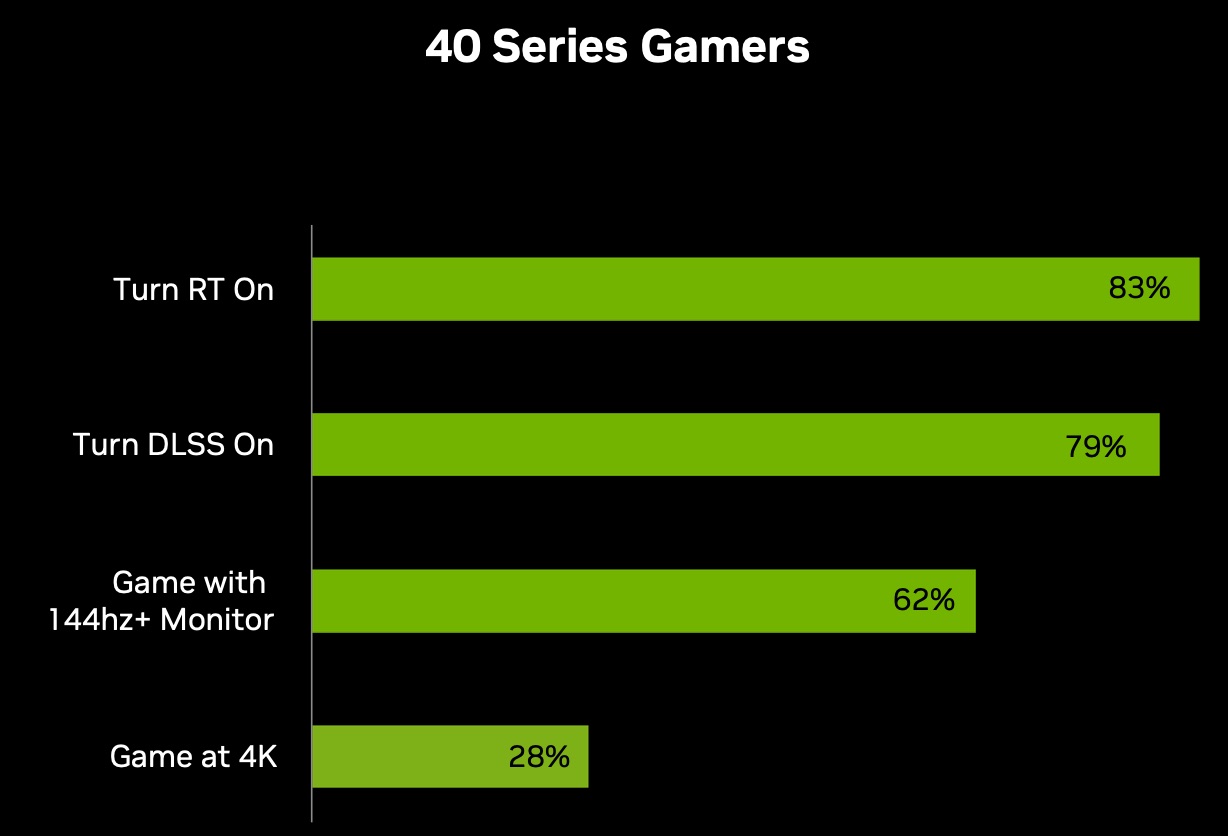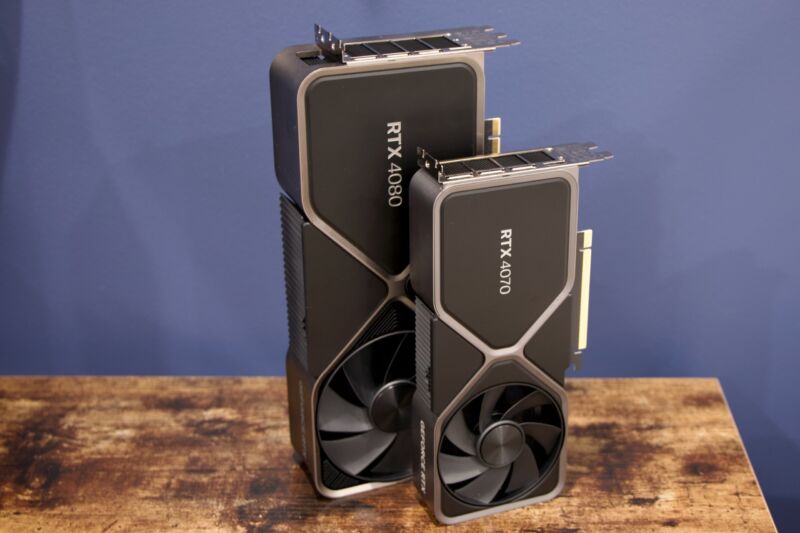As part of its push for the RTX 4070, Nvidia's new $600 entry point into its Ada Lovelace GPU series, Nvidia has some statistics that, depending on how you look at them, are either completely baffling or entirely believable.
In a blog post and in press materials sent out before the 4070's debut, Nvidia offers stats pulled from "millions of RTX gamers who played RTX capable games" in February 2023. They show that:
- 83 percent of 40 series gamers "turn RT on" (ray tracing)
- 56 percent of 30 series
- 43 percent of 20 series
As for DLSS, Nvidia's AI-accelerated upscaling and frame-generation tool for games that support it, Nvidia writes that 79 percent of 40 series, 71 percent of 30 series, and 68 percent of 20 series owners turned the feature on.

Nvidia (or the person writing its copy, at least) believes the "core of this story," the thing to take away from these numbers, is that "technologies don't just define the way people create content, they redefine how it's consumed, ultimately becoming integral parts of its transformation." Or, put another, less graduate-student-dinner-party way, ray tracing and DLSS are "how today's gamers achieve the best graphics and performance." Please consider upgrading your video card, in other words.
Not everybody sees these numbers and comes to the same conclusions. In an r/hardware Reddit thread (first spotted by PC Gamer), many ask what the exact criterion is for "turn on." From experience, ray tracing, or RT, is something you can definitely turn on, play a game for a minute, notice that it looks like a RealVideo stream from 2003, then turn it off. If you did that in February 2023, did you "turn RT on," as such?
Another question would be what the sample sizes look like. Steam's March 2023 hardware and software survey, which incorporated data from October 2021 to March 2023, showed that 15 percent of Steam users were using 20 series RTX cards, 34 percent 30 series, and just 0.68 percent 40 series (thanks to u/nukleabomb for the math). Are these early adopters more or less likely to try out the same features as the rest of the gaming world once they eventually move up to more capable cards? We'll have to find out.
More confounding to think about in Nvidia's numbers are the remainders. Among that very small set of people who were able to source a 40-series card, and also afford to pay for one, the number who would try out DLSS seems like it should be closer to 100 percent. Given that Nvidia's numbers presumably come from those who install its card and use the GeForce Experience app to install and maintain drivers, and the February 2023 dating, there's little chance that the holdouts are crypto opportunists or card flippers.
And those 17 percent of 40-series owners who have used them but haven't turned on ray tracing in any game yet—can we arrange an interview? Is it just video transcoding and rendering? Are they just entirely unimpressed by lighting upgrades, fanatics for frame rate, or both?
There is something for Nvidia to celebrate here, of course. More than 80 percent of the GPUs profiled in Steam's survey are made by Nvidia, and seeing that a firm majority of 20-, 30-, and 40-series owners turn on DLSS gives them remarkable leverage. Other companies can provide ray tracing, and there are DLSS alternatives like XeSS and FSR, which can even work with Nvidia's cards. But DLSS is Nvidia's own thing, it's being used, and it's becoming a selling point. Catching up seems like a tall order for AMD, Intel, and whoever else wants to take on this heavy favorite.



3175x175(CURRENT).thumb.jpg.b05acc060982b36f5891ba728e6d953c.jpg)
Recommended Comments
There are no comments to display.
Join the conversation
You can post now and register later. If you have an account, sign in now to post with your account.
Note: Your post will require moderator approval before it will be visible.